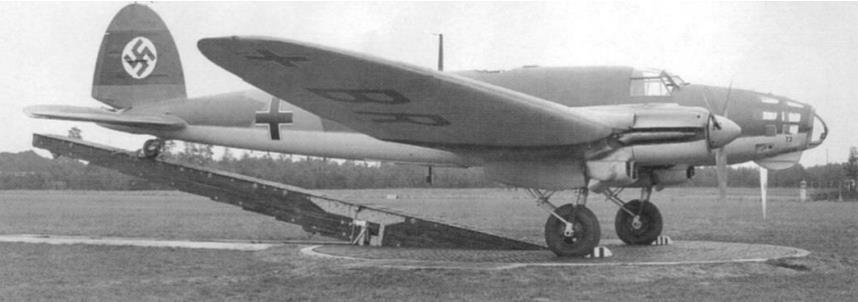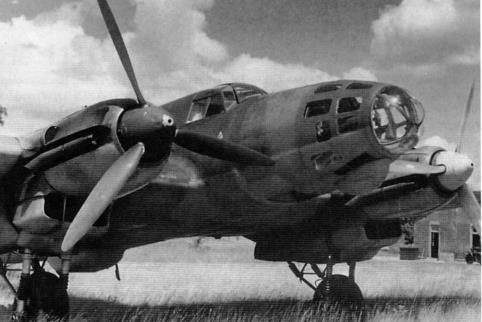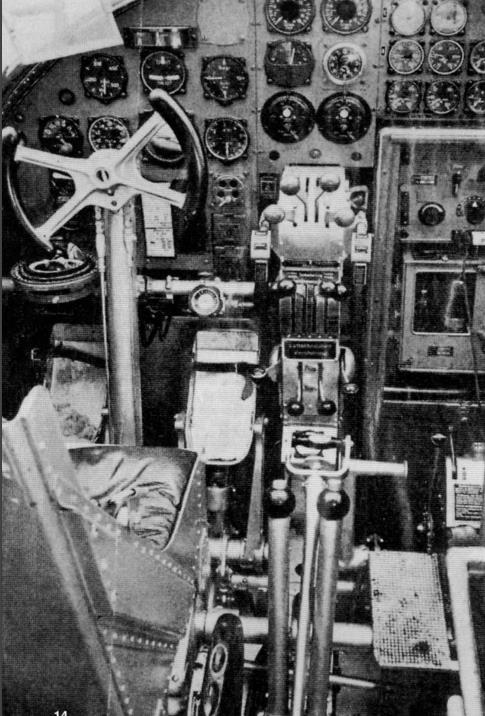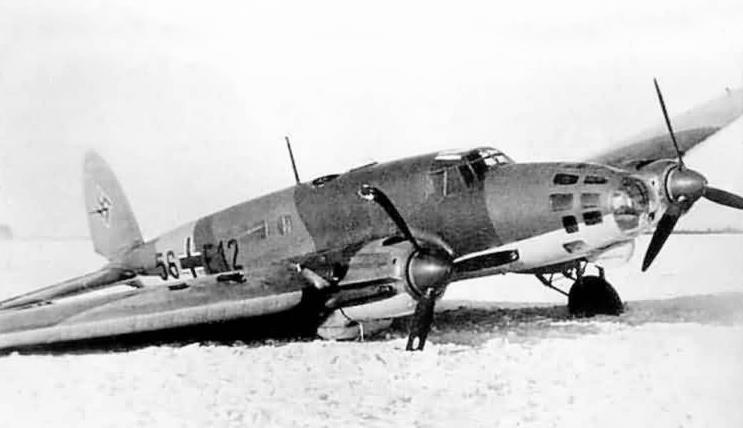He 111 E
Die He 111 E entstand in insgesamt 210 Exemplaren bei NDW (80 Stück, Wnr. 1266-1281, 1297-1360), AFW (50 Stück,
Wnr. 1282-1296, 2380-2381, 02382-02396, 2397-2413, 02414), ATG (40 Stück, Wnr. 5201-5240) und Junkers in Bernburg (40 Stück, Wnr. 111.0001-0040).
| Type |
4-seat medium bomber |
| Engine |
2 Jumo 211A |
| Dimensions |
Length 17,57 m , height 3,9 m , span 22,5 m , wing area 87,6 m2 , |
| Weights |
Empty 5885 kg, loaded 10600 kg, max. take off weight |
| Performance |
Max.. speed 356 km/h at sea level , 395 km/h at 4000 m, cruising speed 320 km/h at 4000 m ,landing speed 120 km/h , range 1125 km, endurance , service ceiling 7600 m , climb to 2000 m 6,8 min., to 4000 m17,5 min., start runway 380 m |
| Armament |
A-Stand 1 7,92 mm MG 15 , 1050 rounds, B-Stand 1 7,92 mm MG 15, 1050 rounds, C-Stand 1 7,92 mm MG 15, 1050 rounds. Bombload 2000 kg |
The He 111E saw a second change of engine, from the DB 600 to the Junkers Jumo 211A. Production of the Daimler Benz engine was limited, with priority for deliveries going to Messerschmitt for the Bf 109 and Bf 110. Heinkel would later return to Daimler Benz with the He 111P, but the Jumo would power the most numerous version of the aircraft, the He 111H.
E-0
The pre-production E-0 appeared in January 1938. Bomb load was increased to 1700kg/ 3747lb, but the eight compartment bomb bay was retained, so the largest bombs that could be carried weighed 250kg/ 551.1lb.
E-1
The production E-1 followed in February 1938. Bomb load improved again, to 2000kg/ 4409lb. Forty five of the 120 He 111E-1s built were sent to Spain to take part in the Civil War.
E-2
One E-2 was built, with minor changes compared to the E-1.
E-3
Sixty-seven E-3s were built during 1938. The most significant change here was an increase in fuel capacity from 640 gallons to 911 gallons by the installation of extra tanks in the wings.
E-4
Although only ten E-4s were built the type represented a major breakthrough. The E-4 carried part (or possibly all) of its bomb load on external bomb racks. Each of these could carry 1000kg/ 2204lb of bombs, giving the aircraft the same payload as the E-1, but the external bomb racks could carry larger bombs than would fit in the internal bomb bay. Some sources suggest that the E-4 carried one external bomb rack with the rest of the bombs in one half of the internal bomb bay, others suggest it used two external bomb racks.
E-5
The E-5 was similar to the E-4 but with an extra 220 gallon fuel tank in one half of the internal bomb bay.











